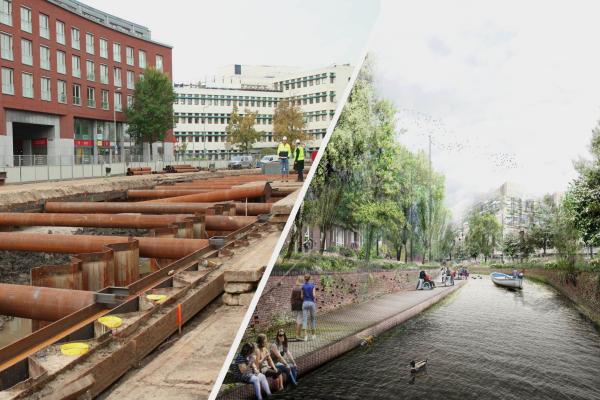
Creating Green Cities that are Inclusive
Acknowledging the key political and environmental moment for cities to initiate their transitions and building on the experience of UIA funded projects, UIA has been leading a two-year knowledge activity to further explore how cities can facilitate the just transitions so that no one is left behind.
It is crucial to bring forward practical interventions and results that can inspire and foster locally-based transitions in EU cities. Cities are particularly vulnerable to climate change impacts and at the same time drivers of the climate emergency, key players in achieving a carbon neutral society ensuring Just Transitions. They have the potential to implement radical local experiments that can be upscaled and adapted throughout Europe. They operate as a place for innovation, co-creation and participatory citizen-led actions, using technology and space. This article is showcasing three UIA projects that have worked on such topics.
The GreenQuays biodiversity monitoring
The GreenQuays project, based in the city of Breda, aims to develop, and test "green" technology, specifically designed to support the development of a vertical ecosystem and to create conditions for the growth of herbaceous plants, ferns and mosses. The Green Quays project is a nature-inclusive development of the quays and surrounding (green) public space. Various techniques are used to achieve this, such as tree sections in the quay walls, material choices and drainage system. The combination of these different techniques applied in an inner-city context makes this project unique.
However, will the design of the quay walls and the material used for construction really enable species to find habitats? This is achieved through a biodiversity monitoring before and after the construction to demonstrate the success of the project and justify the efforts. The monitoring is done on flora (wall plants) and fauna insects, birds and bats, fishes.
Three areas are monitored: close to the GreenQuays area as baseline area; and a reference area further away to compare with. The latter one can, at the same time, be the source area from which flora and fauna can migrate to the new quays. The monitoring of each species group follows a specific protocol. Over the last two years, flora has been monitored twice per year for two days in May/ June and in September / October, fishes 1-2 times per year during that period, birds in spring, and insects on a weekly (butterflies), bi-weekly (dragon flies) or monthly (bees and wasps) basis between March and October.
Data for the wall plants are collected with an app (Vera-app) and find thus their way into the “Verspreidingsatlas”, an Atlas of the Netherlands that documents the distribution of every wild plant. In 2022, the team has also noted 7 target species in the neighbourhood of the GreenQuays. They show what can be expected in the future at the GreenQuays.
Kerkrade Super Estate and Just Transitions
The demolition of residential buildings has historically resulted in a loss of residents and social cohesion, in the downcycling of recovered materials of low (or no) market value, as well as in high environmental costs through lost embodied carbon. The embodied carbon in new raw materials adds to the losses. Super Circular Estate, a project running in Kerkrade in the region of Parkstadt Limburg, sought to mitigate these losses by:
Exploring material circularity and reuse options in new construction by ‘deconstructing’ an existing 1968 10-storey apartment block and harvesting its materials to construct three demonstrator homes in the same neighbourhood using different reuse/recycle techniques and using up to 75%-100% of the recovered materials. Demolition and construction took place simultaneously, with the demolisher supplying the building contractor with the materials harvested from deconstruction. Super Circular explored several material and circularity and reuse options for the new buildings via a material inventory bank and developed several new managerial and technological techniques and spin-off construction products (circular concrete, a new type of brick, etc.).
Maintaining social cohesion during demolition, relocation and reconstruction processes by involving residents and having the former residents return to live in the new dwellings to preserve local social cohesion.
Sofia INNOAIR puts green mobility options on the road
The Municipality of Sofia, Bulgaria, is tackling emissions from road transport through the project “Innovative demand responsive green public transportation for cleaner air in urban environment“
The INNOAIR project had taken a number of successful first actions in implementing highly-interlinked innovative services for the improvement of air quality in Sofia and had gathered an understanding of citizens’ expectations from the shared e-bus service which is one of the four innovative solutions to improve air quality and reduce emissions that the INNOAIR project has been focusing on.
These services included the deployment of green on-demand minibuses, the establishment of green corridors for public, active and shared transport modes, and the implementation of low emission zones. The project identified potential routes for the on-demand minibuses and developed an AI-and-big-data enabled software platform for their management, and it implemented wide activities for the engagement of citizens for the co-creation of the services. Overall, the implementation of these measures marks significant achievements in the INNOAIR project's efforts to improve air quality in the city of Sofia.